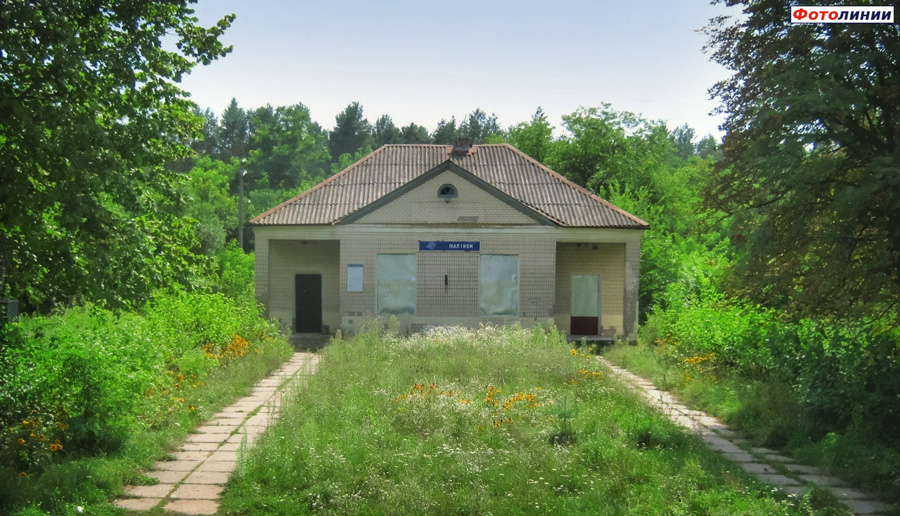All Aboard for Chernihiv
Despite the Chornobyl accident, a portion of the least contaminated part of the rail line still operates today. Stretching from Chernihiv to Iolcha, the active line is relatively sparse, with several stops alongside very small villages. The major population center along the line is Slavutych, where many displaced from Pripyat resettled, with about 25,000 people, and Chernihiv with around 300,000 people.
Although a bit hard to believe, electrification of the line was actually completed after the Chornobyl disaster, all the way into the exclusion zone and to Semikhody station. Due to the contamination from the Chornobyl disaster, serious work needed to be completed on the line - including the replacement of some highly contaminated track ties, and a thorough washing of the Pripyat and Dneiper River bridges. The rails were, however, instrumental in the cleanup work and the construction of the new city of Slavutych, as both workers and materials were moved by train.
For the average person, Iolcha is the furthest west you can ride the line. Five special trains in each direction operate daily from Slavutych to Semikhody, which carry plant workers to their jobs.
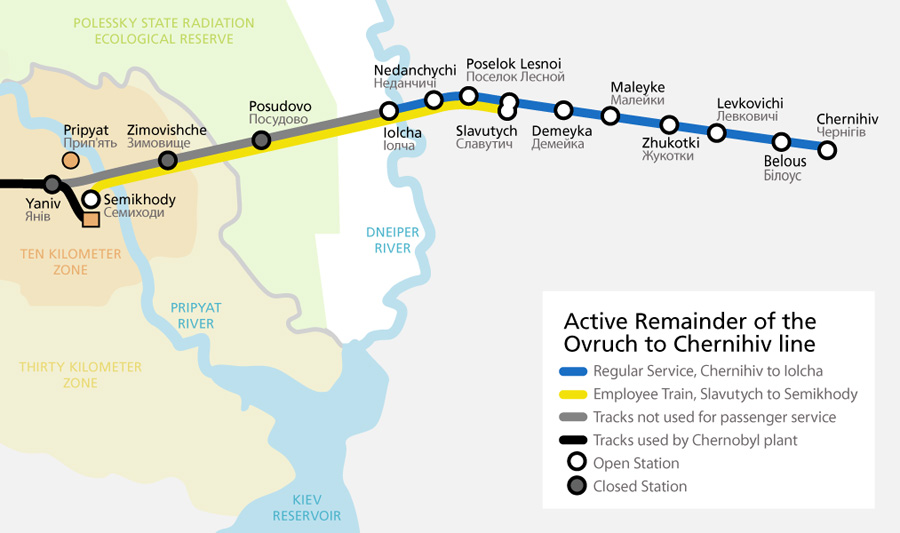
Map showing the active portion of the line. To view the full map of the line
click here.

Chernhiv station was constructed in 1950 by German POWs. The original station was destroyed in 1941 by the Nazis.
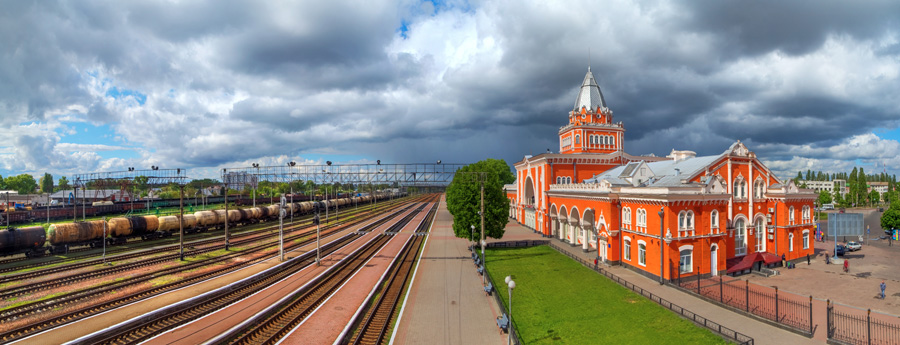
Chernihiv is a fairly active station, receiving long distance passengers from Russia and Belarus, and commuter service from Iolcha and Nizhin. The first four tracks are usually reserved for passenger equipment, where the further tracks are for freight movements.
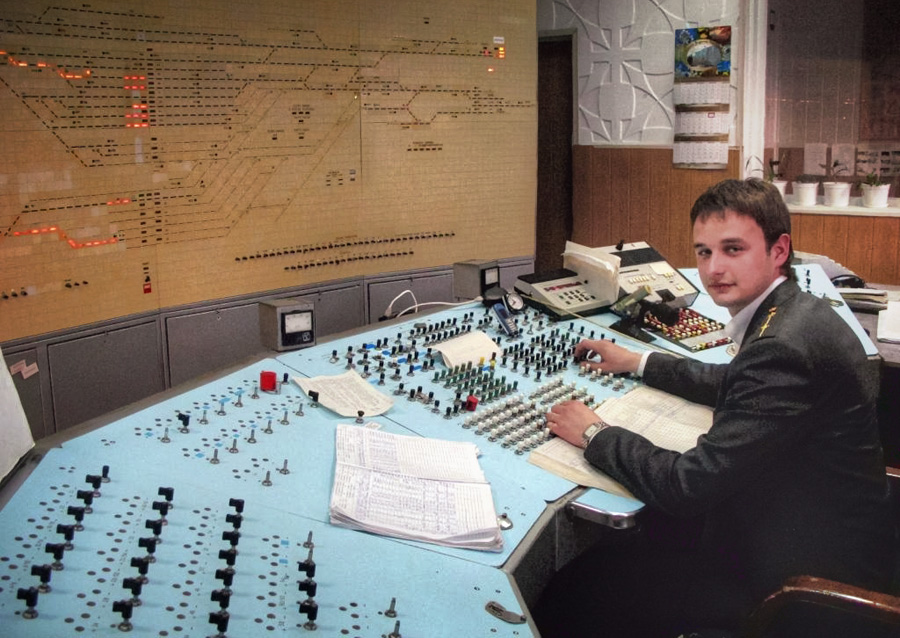
Chernihiv's Station Duty Officer sits in front of the railroad's display board. The duty officer oversees the movement of trains in the Chernihiv zone, and is similar to what we would call a Yardmaster. [ Photo credit:
Stanislav /
Railwayz ]
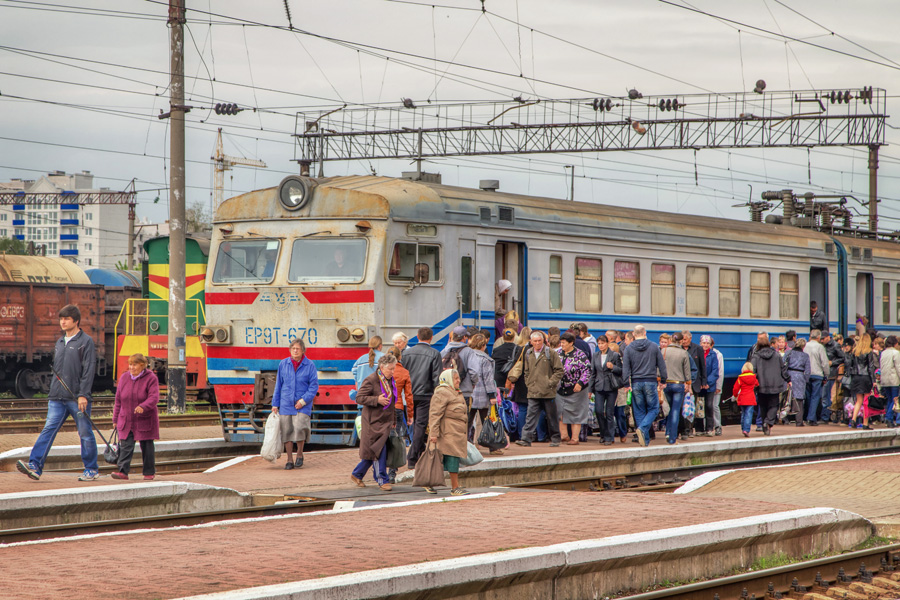
A train originating at Nedanchychi arrives at its final destination, Chernihiv station. Slavutych is the largest city along the line, thus the majority of people disembarking are from there. After about a half an hour, the train will reverse back toward Slavutych.
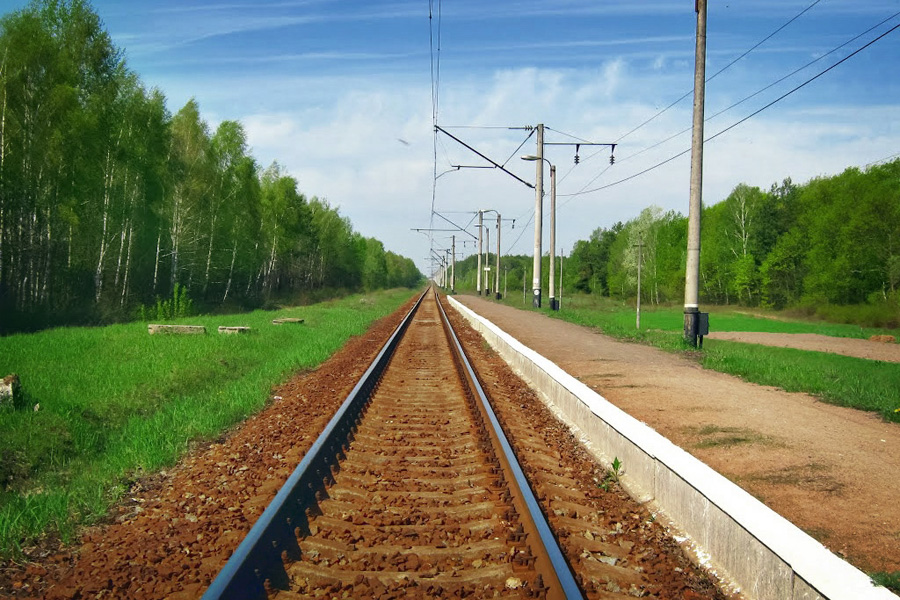
Many of the active "stations" along the rail line are very rudimentary, with low level platforms and little else. This is the platform at Levkovichi, looking west toward Slavutych and Chornobyl. [ Photo credit:
Andre1985 /
Panoramio ]

A young woman from Slavutych looks out the window of the train as it heads for Chernihiv.
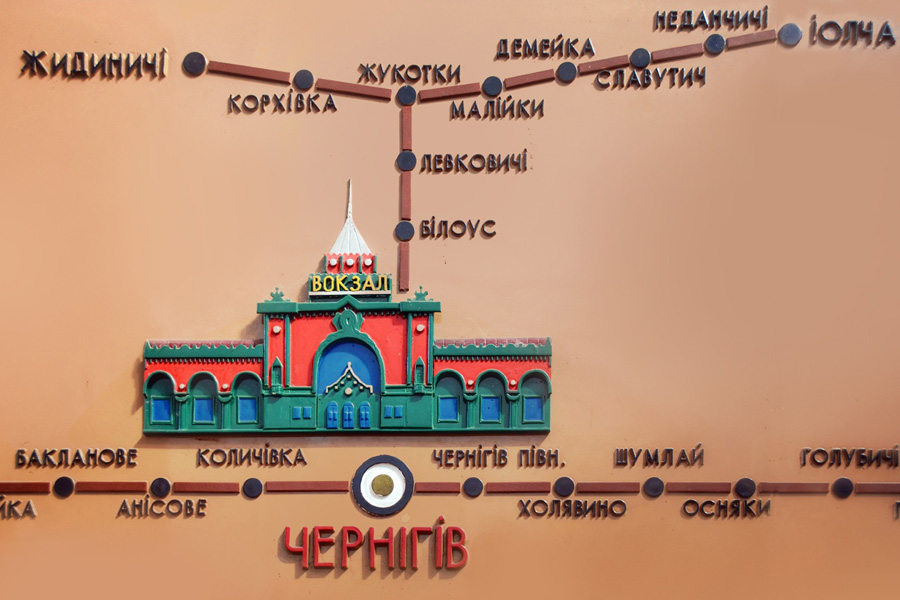
On the wall of Chernihiv station, a diagram shows the remaining portion of the rail line to Iolcha in the top right. The small branch line to the top left has since been eliminated, and the tracks removed.
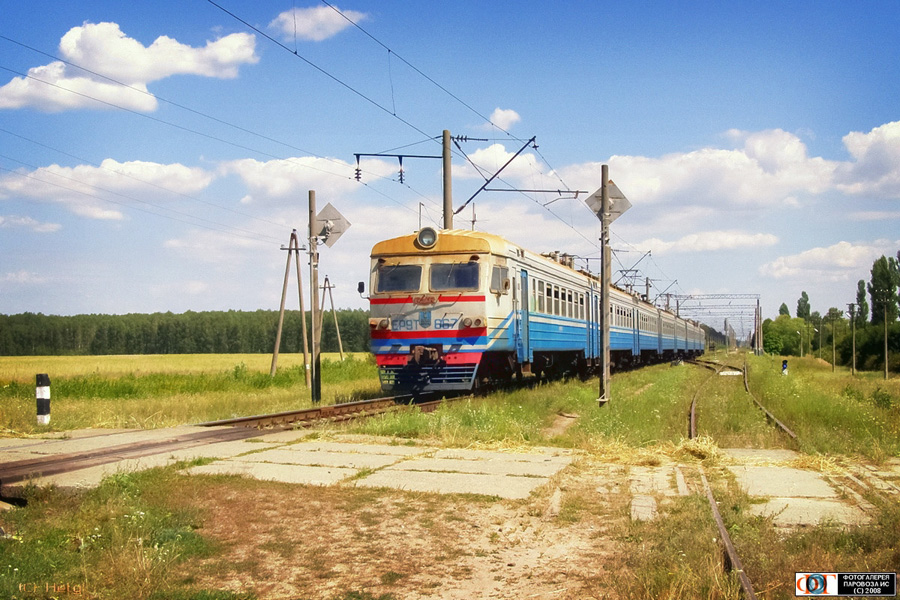
A train passes through Zhukotki. The actual village of Zhukotki, with roughly 500 inhabitants, is about four kilometers from the railroad tracks. [ Photo credit:
Helgi /
Parovoz ]
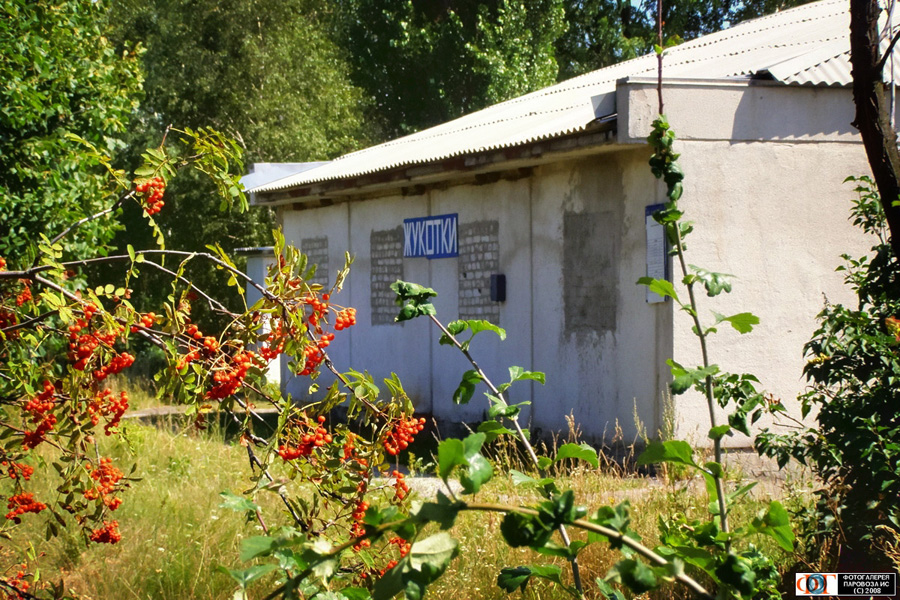
The station building at Zhukotki, which is no longer used. [ Photo credit:
Helgi /
Parovoz ]

A woman who boarded at Slavutych prepares to disembark.

The station at Nedanchychi is one of a few that is in active use, along with a small waiting room. The village has roughly 700 inhabitants. [ Photo credit:
Ivan Voronin /
Railwayz ]
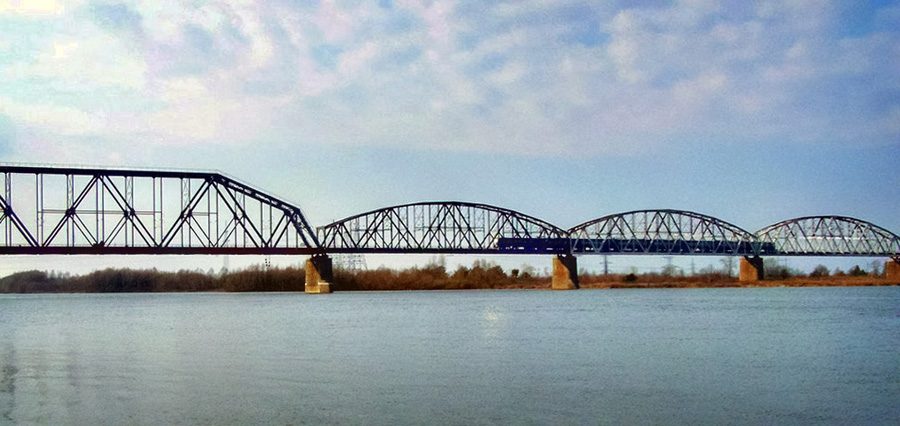
A train crosses the railway bridge over the Dneiper River. The river is a natural border in between Ukraine and Belarus. [ Photo credit:
Fraskini /
Panoramio ]

Iolcha is the only active station along the line in the territory of Belarus. The rail line traverses a swath of this country, before returning to Ukrainian territory. [ Photo credit:
Ban /
Panoramio ]

An evening train on the platform at Iolcha. Iolcha is a limited service station, and receives far fewer trains than the stations located in Ukrainian territory. [ Photo credit:
Belarus /
Parovoz ]
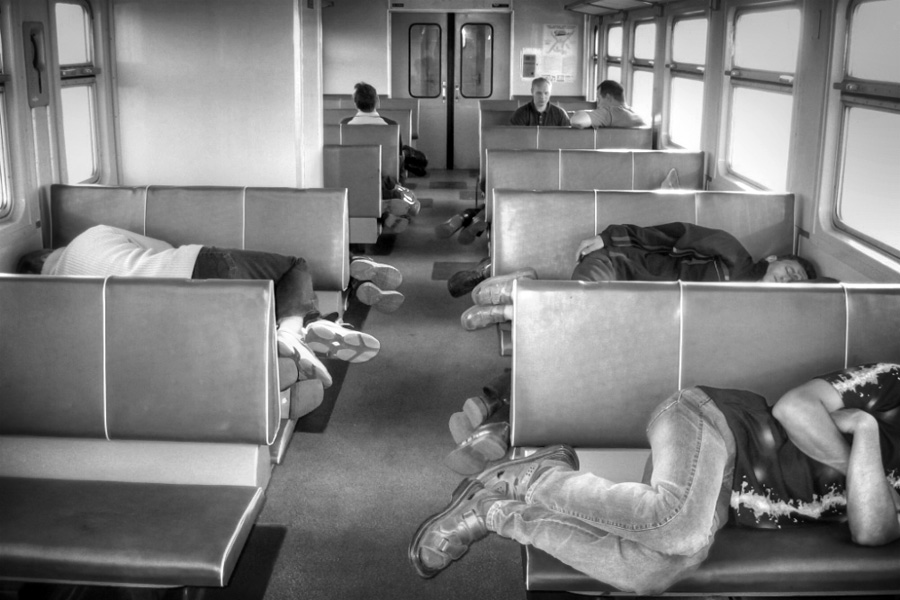
Men that work the night shift at the Chornobyl plant nap on the seats of the first morning train back to Slavutych. [ Photo credit:
Alexey /
Pripyat.com ]










